In the race towards global decarbonisation, achieving net zero has become paramount. Net zero refers to the balance between greenhouse gas emissions emitted and removed from the atmosphere. Nature-based projects have emerged as a powerful tool to achieve net-zero goals, harnessing the potential of natural ecosystems to capture and store carbon. In this blog post, we will embark on a captivating journey to understand the scope, features, types and benefits of nature-based projects.
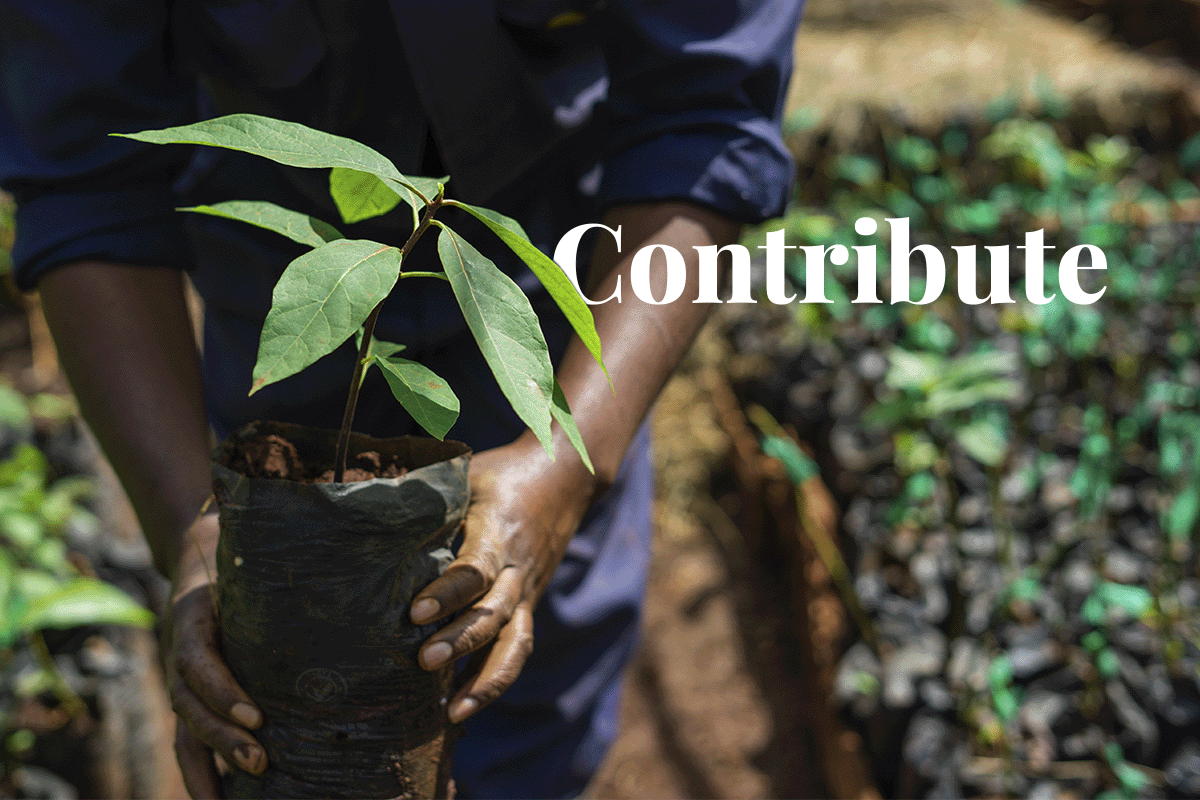 A man holding a tree seedling – Hongera Reforestation Project, DGB.
A man holding a tree seedling – Hongera Reforestation Project, DGB.
Understanding nature-based projects
Nature-based projects encompass initiatives that leverage the power of natural ecosystems to capture and store carbon emissions. These projects include reforestation, afforestation, coastal wetland restoration, and peatland conservation. Nature-based projects play a vital role in mitigating climate change and biodiversity loss. According to estimates, nature-based solutions can provide 37% of the mitigation needed until 2030 to achieve the Paris Agreement targets.
Nature-based projects utilise natural processes to capture and store carbon dioxide. Trees, for example, absorb carbon dioxide through photosynthesis, storing it in biomass and soil. Forests, coastal wetlands, and peatlands act as carbon sinks, sequestering vast amounts of carbon. By harnessing these natural processes, nature-based projects contribute significantly to reducing greenhouse gas emissions.
Nature-based solutions offer several advantages over mechanical carbon storage methods. Firstly, nature-based projects provide co-benefits beyond carbon sequestration. They enhance biodiversity, support local ecosystems, improve air and water quality, and promote community wellbeing. For example, reforestation projects can provide livelihood and job opportunities, enhance water resources, and restore habitat for wildlife. Coastal wetland restoration projects offer coastal protection, improve water quality, and support fish and bird populations. Secondly, nature-based solutions are often more sustainable compared to technological approaches. They offer a sustainable and long-term approach to climate action. In other words, they support nature to prosper.
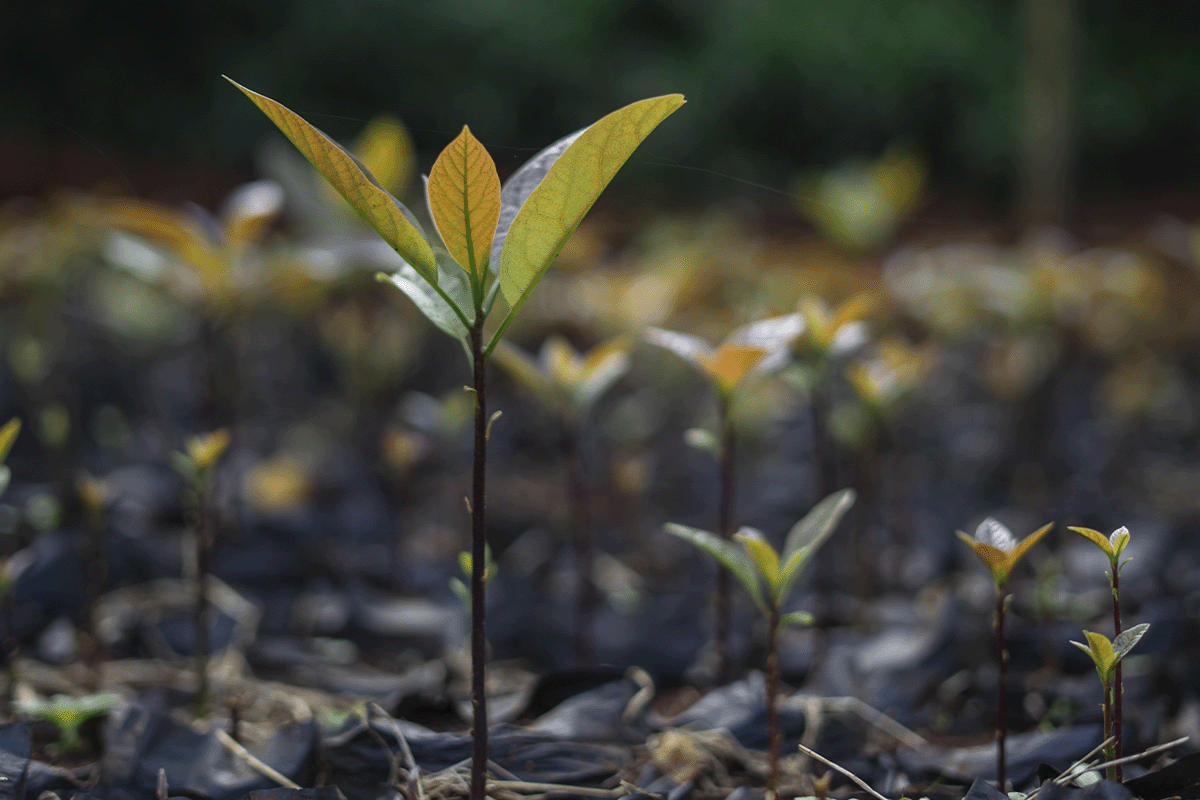 Tree seedlings in a tree nursery – Hongera Reforestation Project, DGB.
Tree seedlings in a tree nursery – Hongera Reforestation Project, DGB.
By sequestering carbon, these projects help combat environmental issues and offset emissions from various sources such as industries and transportation. These projects provide sustainable and resilient solutions by working in harmony with nature. The cumulative impact of nature-based projects can be substantial in achieving net-zero goals.
Read more: Net zero: benefits, challenges, strategies, and the power of nature-based solutions
Looking ahead, the spectrum of nature-based projects is expanding. Innovative approaches such as regenerative agriculture, blue carbon projects, and sustainable land management are gaining traction. These projects not only contribute to net-zero goals on a global scale but also provide opportunities for companies to purchase carbon credits, thereby offsetting their emissions and aligning with their sustainability commitments. By supporting a diverse range of nature-based projects, we can amplify their impact on net-zero goals. Let’s look at more in-depth explorations of various nature-based solutions and their unique features.
Reforestation initiatives
Forests are vital carbon sinks and home to most of the world’s biodiversity. However, forests globally are under threat due to deforestation. Reforestation and afforestation projects play a vital role in restoring degraded forest ecosystems and combating climate change. By planting trees and restoring forested areas, these initiatives help sequester carbon, enhance biodiversity, restore habitats, improve water security, and provide socio-economic benefits to local communities. Let’s explore three specific reforestation projects of DGB Group that exemplify the impact of such endeavours.
Read more: Reforestation: 10 amazing benefits of planting trees
The Hongera Reforestation Project in Kenya
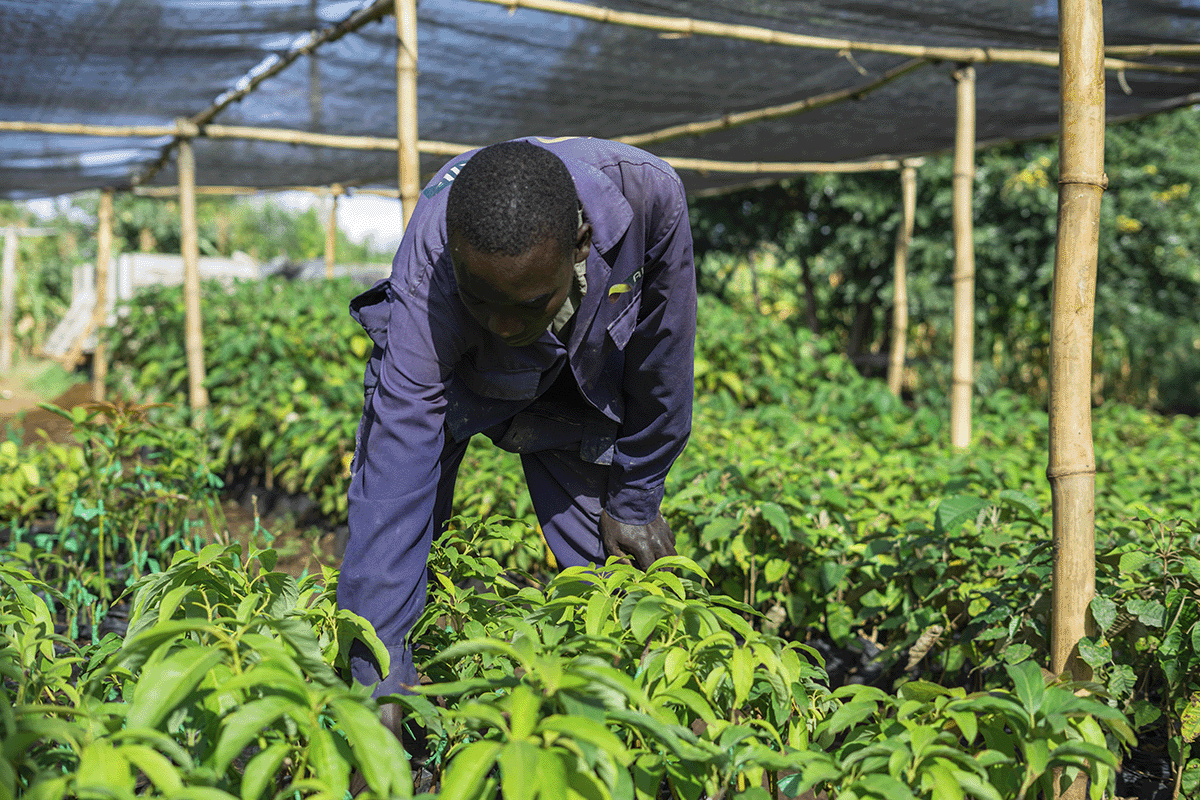 A man working on a tree nursery in Kenya as a part of the DGB Hongera Reforestation Project.
A man working on a tree nursery in Kenya as a part of the DGB Hongera Reforestation Project.
The Hongera Reforestation Project aims to restore previously-forested areas in Kenya affected by human activities like deforestation. With the goal of planting over 16 million trees over a seven-year period, the project focuses on catchment areas such as Mt Kenya and the Aberdares. By engaging with local communities, including smallholder farmers, the project provides jobs, empowers the community through training, and protects biodiversity. Fruit trees, indigenous trees, and fast-growing species are planted, ensuring the survival of diverse tree species while benefiting the local communities and farmers.
Read more about the Kenya reforestation project
The Bulindi Chimpanzee Habitat Restoration Project in Uganda
The Bulindi Chimpanzee Habitat Restoration Project in Western Uganda aims to safeguard the remaining habitat of the Bulindi chimpanzees. The project collaborates with local communities to find sustainable solutions benefiting both chimpanzees and people. Over 300 wild chimpanzees survive in shrinking fragments of forest on agricultural land. Through forest enrichment planting and by providing sustainable land management training, woodlots for sustainable fuel, energy-saving stoves, and tree seedlings, the project reduces human-wildlife conflicts and supports the wellbeing of local households.
Read more about the Uganda habitat restoration project
The Sawa Afforestation Project in Cameroon
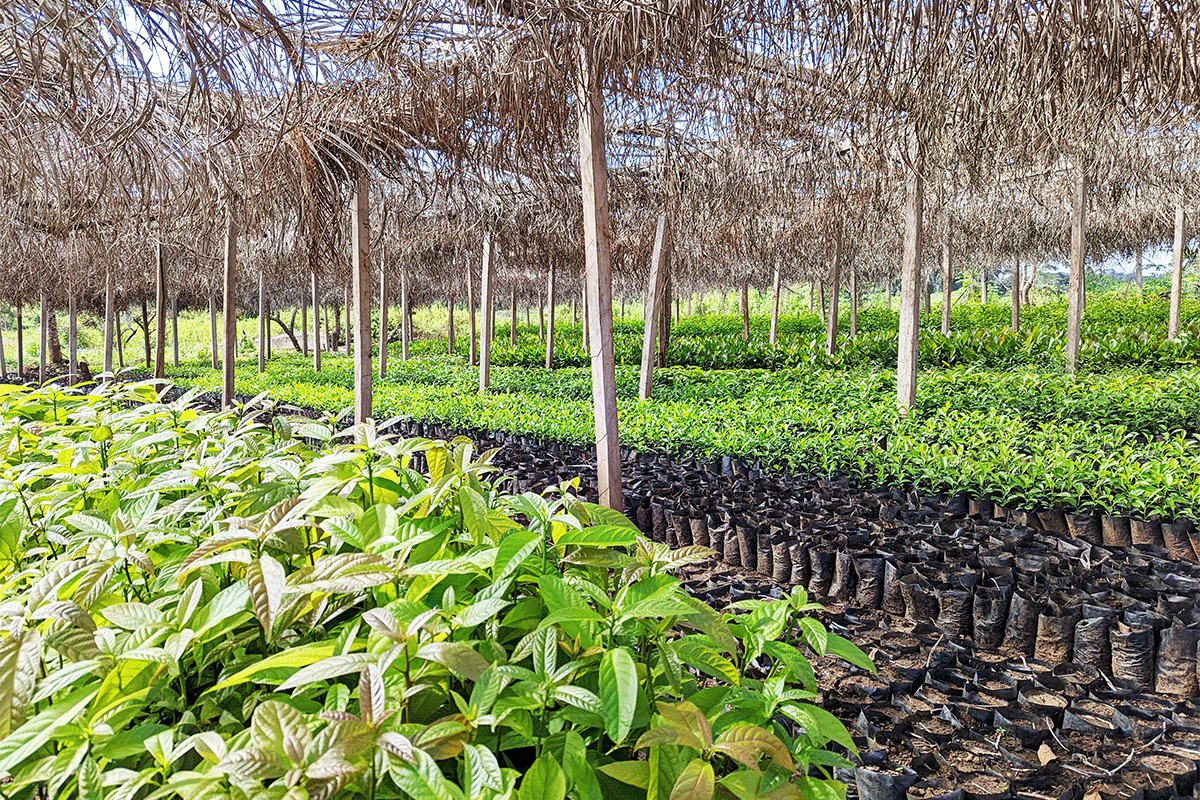 Tree nursery – Sawa Afforestation Project in Cameroon.
Tree nursery – Sawa Afforestation Project in Cameroon.
The Sawa Afforestation Project is a large-scale initiative in the Congo Basin region of Cameroon that is dedicated to combatting deforestation and promoting sustainable development. With a target of planting over 30 million trees, the project focuses on community-owned land and aims to sequester carbon, improve water quality, restore forests, and create jobs to empower local communities. Utilising advanced technology, including on-the-ground sensors, drones, satellites, and machine-learning models, the project monitors biodiversity and predicts future activities for effective land management and forest restoration.
Read more about the Cameroon afforestation project
These projects exemplify the broader impact of reforestation and afforestation projects. Through strategic tree planting and community engagement, these initiatives restore ecosystems, protect wildlife habitats, empower local communities, and contribute to global efforts to mitigate climate change. By supporting organisations like DGB and investing in reforestation and afforestation, we can make substantial strides towards achieving net-zero goals while fostering a sustainable and resilient future.
Coastal wetland restoration
Coastal wetlands, including mangroves, salt marshes, and seagrass beds, are invaluable ecosystems and remarkable carbon sinks. Recent studies show they are pollution-catching powerhouses. They sequester carbon dioxide from the atmosphere and store it in their biomass and sediment. They further provide critical habitats for diverse marine life, protect coastlines from erosion, and support coastal communities.
Coastal wetland restoration projects aim to reverse the degradation of these vital ecosystems. Efforts include the removal of invasive species, the creation of channels to facilitate water flow, and the establishment of protective buffer zones. These projects focus on restoring the natural functions of coastal wetlands.
Read more: The importance of conserving Earth’s wetlands for a sustainable future
Numerous successful coastal wetland restoration projects have contributed to net-zero goals. For instance, the Mississippi River Delta restoration project in the United States revitalises coastal wetlands, enhancing carbon sequestration while protecting against storm surges. Restoration efforts are also under way for the Sundarbans, the largest mangrove forest in the world located in Bangladesh and India. These initiatives aim to safeguard mangrove forests, reduce carbon emissions, and support local communities’ resilience.
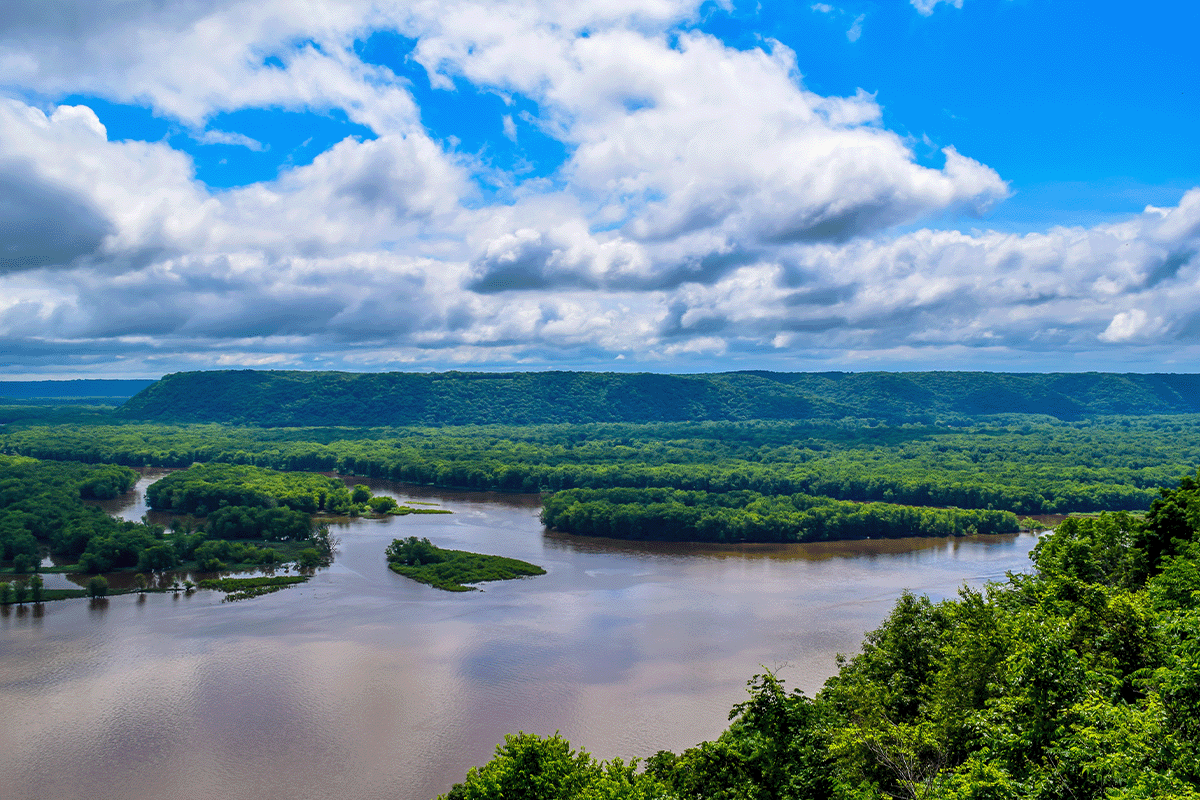 View of Mississippi River Delta.
View of Mississippi River Delta.
Coastal wetland restoration projects offer a host of ancillary benefits for coastal communities and wildlife. They improve water quality, provide nurseries for fish and shellfish, and create recreational opportunities. Additionally, restored wetlands act as natural buffers against storms, safeguarding coastal communities from the impacts of climate change. Projects restoring and protecting wetlands are therefore vital in achieving net-zero goals.
Peatland conservation and restoration
Peatlands are wetland ecosystems characterised by the accumulation of partially decayed organic matter known as peat. They play a critical role in the global carbon cycle, acting as massive carbon stores. Peatlands are found in diverse regions, including boreal forests, tropical rainforests, and tundra landscapes.
Peatlands face significant challenges, including drainage for agriculture, peat extraction for fuel, and wildfires. These activities degrade peatlands, leading to the release of stored carbon and contributing to greenhouse gas emissions.
Read more: Peatland restoration: Why it’s crucial and how to pay for it
Successful peatland conservation projects have made remarkable contributions to net-zero goals. In the Scottish Flow Country, efforts to preserve and restore peatlands have reduced greenhouse gas emissions and enhanced biodiversity. Indonesia’s Peatland Restoration Agency has made significant strides in conserving peatlands, preventing further degradation and mitigating climate change.
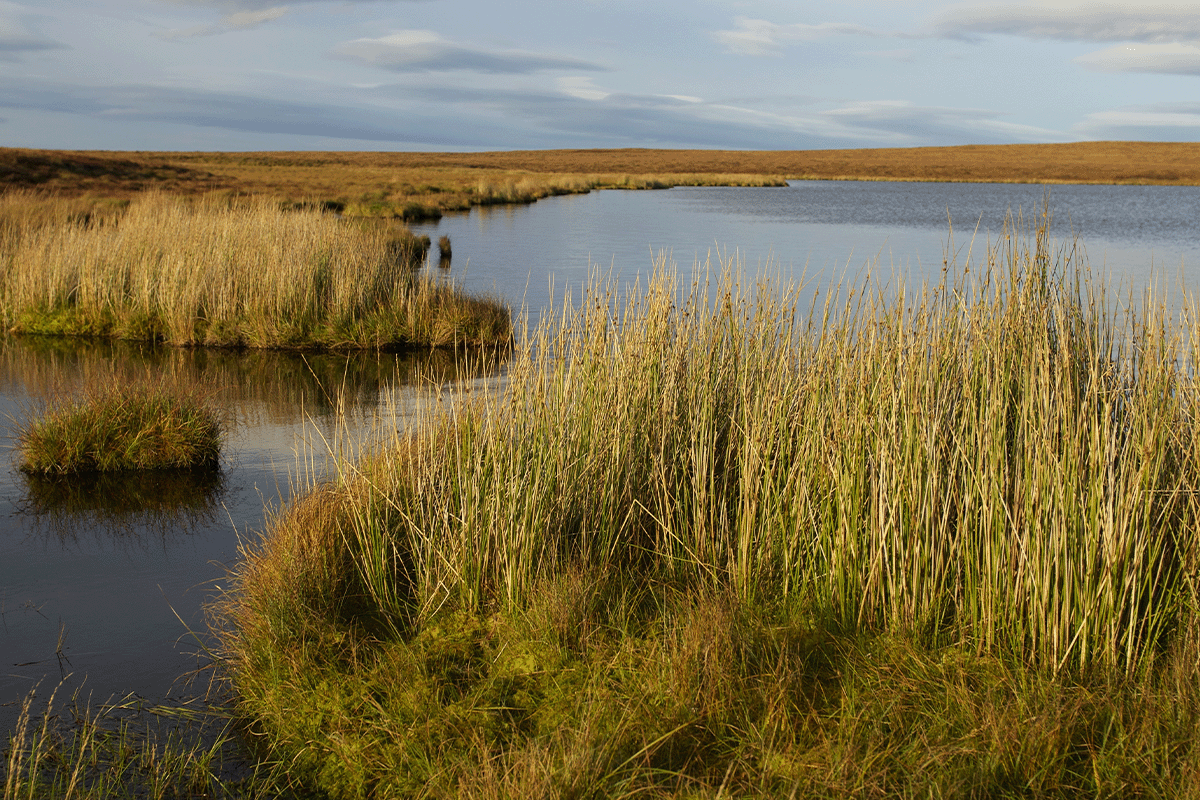 Peatland landscape, Scotland.
Peatland landscape, Scotland.
Conserved and restored peatlands act as significant carbon sinks, sequestering carbon dioxide from the atmosphere and reducing greenhouse gas emissions. Peatland conservation and restoration projects require collaborative efforts with local communities and government bodies. Indigenous knowledge and traditional practices also often play a vital role in preserving peatlands. Engaging local stakeholders and ensuring their participation leads to more effective and sustainable outcomes. By protecting and rehabilitating these fragile ecosystems, we can effectively combat climate change and reach net-zero goals.
DGB Group’s nature-based solutions: The road to net zero
Nature-based projects play a crucial role in achieving net-zero goals by capturing and storing carbon, protecting ecosystems, and empowering communities. They offer sustainable and resilient solutions that contribute to climate change mitigation on a global scale.
To accelerate progress towards net-zero goals, it is essential for individuals, organisations, and governments to support and invest in nature-based projects. By channelling resources, raising awareness, and implementing policies that foster nature-based solutions, we can unlock their full potential in addressing climate change and biodiversity loss.
Nature-based projects are not only instrumental in achieving net-zero goals but also in creating a sustainable and inclusive future. By embracing these projects, we can restore ecosystems, protect biodiversity, and improve the wellbeing of both people and the planet.
By highlighting the remarkable ability of reforestation initiatives, coastal wetland restoration projects, and peatland conservation efforts, we can inspire action and lead the way for a greener, more sustainable world. Let us recognise the transformative role of nature-based projects and unite in our efforts to build a brighter future for all. Together, we can make a significant impact and realise the power of nature-based projects in achieving net-zero goals.
Unlock the power of nature-based solutions and reach net zero
- SEO Powered Content & PR Distribution. Get Amplified Today.
- PlatoData.Network Vertical Generative Ai. Empower Yourself. Access Here.
- PlatoAiStream. Web3 Intelligence. Knowledge Amplified. Access Here.
- PlatoESG. Automotive / EVs, Carbon, CleanTech, Energy, Environment, Solar, Waste Management. Access Here.
- BlockOffsets. Modernizing Environmental Offset Ownership. Access Here.
- Source: https://www.green.earth/blog/how-nature-based-projects-contribute-to-net-zero-goals



